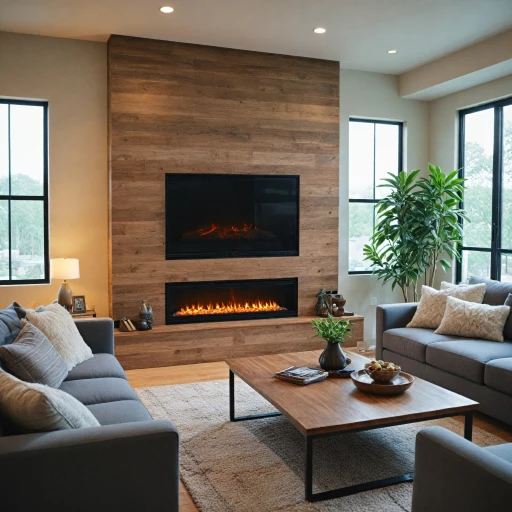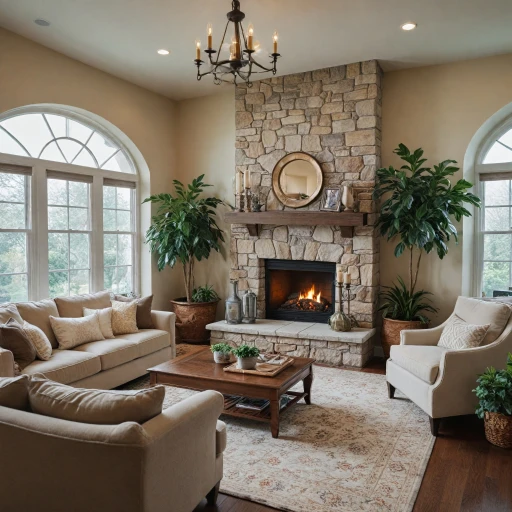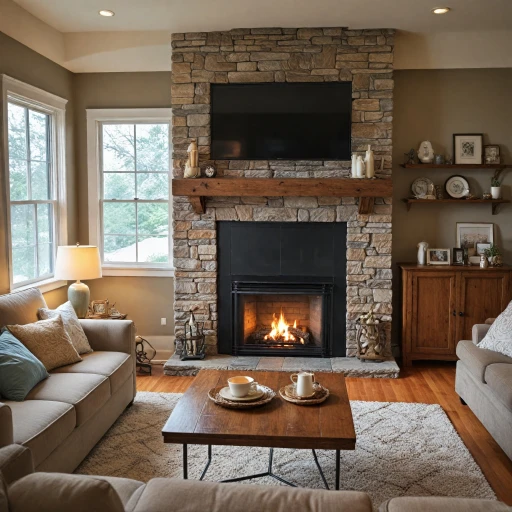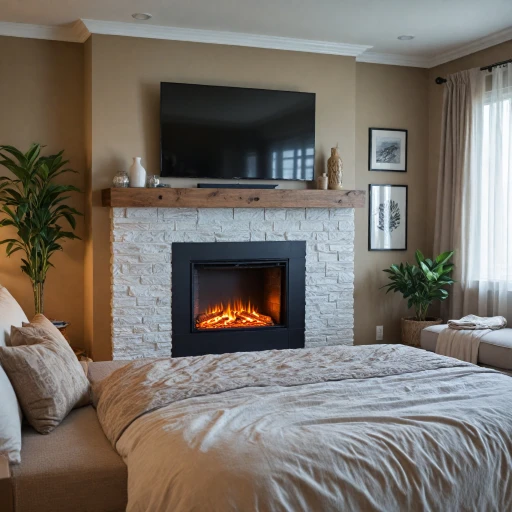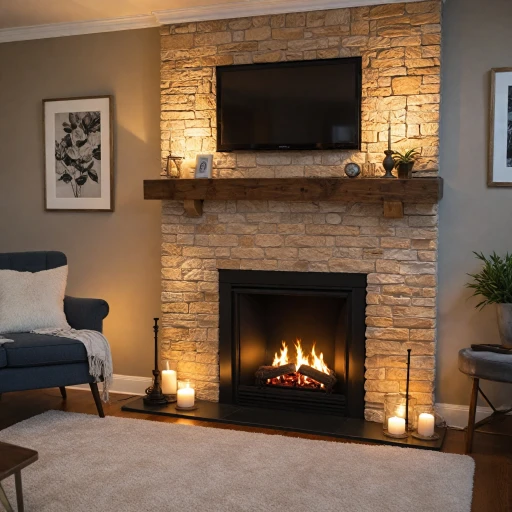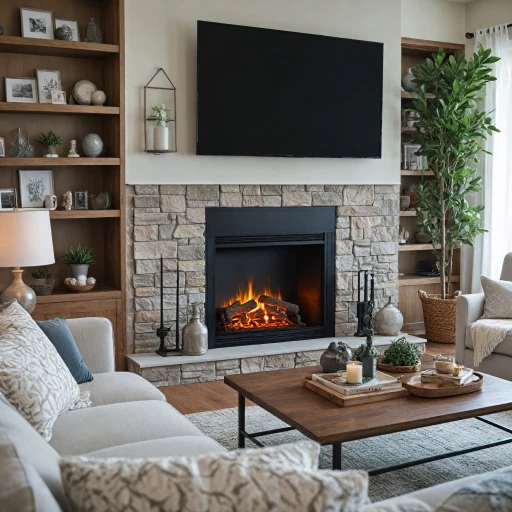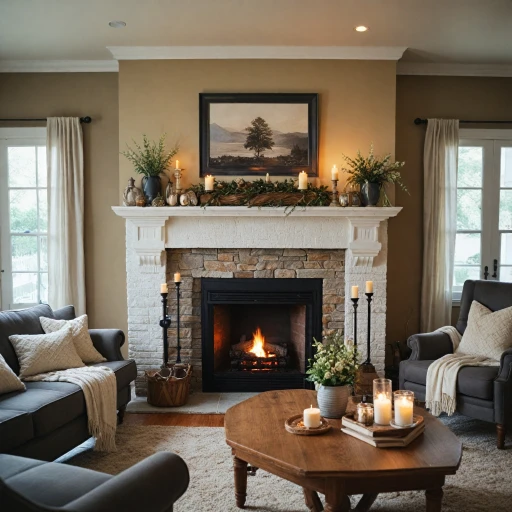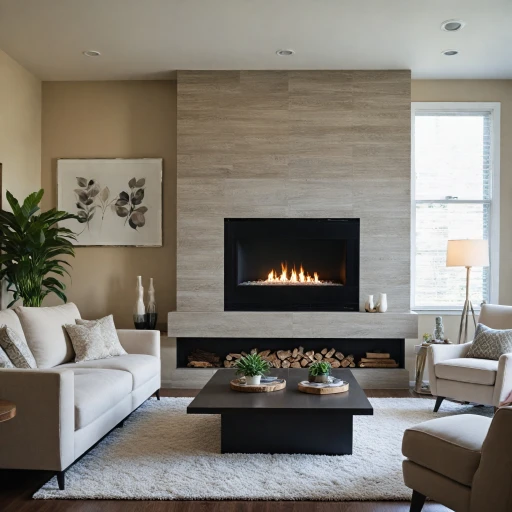
Understanding Wood Burning Inserts
What Exactly Are Wood Burning Inserts?
Wood burning inserts are a smart way to transform your existing fireplace into a more efficient heating source. Think of them as a snugly fit appliance that slides into your existing firebox. They close off much of the space where heat traditionally escapes up the chimney, essentially creating a wood stove in your fireplace. This clever setup allows the unit to provide significantly more heat to your home. Many homeowners choose inserts for their aesthetic appeal and improved function compared to an open fireplace. With a variety of options, from traditional cast iron designs to sleek, modern styles, there's an insert to match every taste. Whether you're eyeing something like the "Osburn Wood" or perhaps a "Ventis Hei," these inserts often feature a glass door providing a comforting view of the flames while maintaining safety and control of heat output. Incorporating wood inserts into your fireplace setup isn’t just about achieving pleasing aesthetics. It’s about efficiency and harnessing more of the heat produced by burning wood. Modern inserts are crafted to maximize fuel efficiency and create robust air circulation, ensuring that the fireplace not only looks welcoming but serves its primary role as an effective source of warmth. To learn more, you can explore how a built-in electric fireplace might also enhance your home here. This gives insight into alternatives and additional features electric fireplaces offer, especially in comparison with traditional wood models.The Role of a Blower in Wood Burning Inserts
The Impact of a Built-in Fan
When it comes to wood burning inserts, the addition of a built-in fan can be a game-changer. This fan, often referred to as a blower, plays a crucial role in enhancing the heating efficiency and effectiveness of your insert. Unlike traditional stoves that may not distribute heat evenly, a wood insert with a blower can transform the way warmth circulates throughout your space.
The blower works by pushing the heat generated from the burning wood into the room rather than letting it linger in the insert or escape up the chimney. This means more even heat distribution, making your cozy winter nights even cozier. You might imagine how thrilling it is to sit by the firebox, feeling the warm embrace envelop you entirely.
Moreover, these blowers don't just improve heat distribution; they also help in making your wood stoves and inserts more environmentally friendly. By ensuring all the heat produced is utilized efficiently, there's less wastage, which is easier on your wallet and better for the planet. Not to forget, brands like Osburn and Matrix Wood utilize advanced technology for their blower systems, enhancing their reliability and performance.
A surprising bonus is the added control you get over your heating options. Many blowers come with adjustable settings, allowing you to manage the amount of heat distributed according to your preferences, whether you prefer a gentle warmth or a robust heat that engulfs the entire room.
Still curious about how these modifications might benefit your existing fireplace? You can learn more about interesting ways to incorporate electric inserts for existing fireplaces. They offer an excellent comparison point to wood burning models with blowers.
Benefits of Using a Wood Burning Insert with a Blower
A Priceless Partner: Boosting Efficiency and Comfort
When considering a wood burning insert, the inclusion of a blower brings an extra layer of efficiency and coziness to your home. With the right setup, here's how a blower can make life comfier and more energy-efficient. One of the biggest perks of a blower is its ability to circulate the heat from your fireplace insert throughout your living space. By effectively redistributing the heat that naturally rises from the firebox, this nifty gadget ensures that more warmth reaches across the room rather than sticking close to the hearth. This means more heat for you, stabilized temperatures, and less reliance on additional heating options like that pesky gas fireplace! Moreover, a blower isn't picky. Whether you're cozying up to a modern wood burning insert or an old-school cast iron stove, adding this component can enhance the unit's overall effectiveness without a significant spike in costs. Brands such as Osburn or Ventis Hei often offer models that accommodate a blower to maximize their performance. Blowers are also known for ramping up efficiency by helping your wood insert burn wood more completely and cleanly. As the heat disperses, you end up using less wood while extracting more heat per log. This not only leads to reduced costs in your heating bill, but it's also a refreshing way to go green! Looking for a small yet impactful alteration to your wood burning setup? Consider going electric to further cut down the complexity of maintenance without sacrificing the warmth and charm of your fire. For inspiration on electric options that could complement your current setup, consider exploring some enticing benefits associated with an electric stove heater. In essence, adding a blower to your wood burning insert doesn't just enhance the view. It amplifies the efficiency and warmth of the flame, offering homeowners a cost-effective and eco-friendly way to keep things snug and toasty without the traditional confines of a dedicated wood stove.Installation Considerations
Setting Up Your Wood Burning Insert with a Blower
Installing a wood burning insert with a blower can transform your fireplace into a more efficient heating source. However, it's crucial to consider several factors to ensure a smooth installation process. Here’s what you need to know:
- Chimney Inspection: Before installing your wood insert, have your chimney inspected by a professional. This ensures it's in good condition and free of obstructions, which is vital for safety and efficiency.
- Proper Sizing: Choose an insert that fits your existing fireplace opening. Measure the height, width, and depth of your firebox to find the right size. An ill-fitting insert can lead to inefficiencies and safety hazards.
- Ventilation Requirements: Ensure your chimney can accommodate the venting needs of the insert. Some models may require additional venting components, so check the manufacturer's guidelines.
- Electrical Access: Since the blower requires electricity, ensure there is a power outlet nearby or plan for electrical work to provide power to the blower.
- Professional Installation: While some may opt for a DIY approach, hiring a professional can guarantee a safe and efficient installation. They can handle the complexities of fitting the insert and connecting the blower.
Once installed, your wood burning insert with a blower can significantly enhance your home's heating efficiency, providing a cozy atmosphere during colder months. For those considering other heating options, comparing the benefits of wood inserts with alternatives like gas fireplaces or electric fireplaces can provide valuable insights.
Maintenance and Care Tips
Smart Practices for Longevity and Efficiency
Taking care of your wood burning fireplace insert equipped with a blower isn’t just about keeping the heat flowing efficiently; it’s also about ensuring safety and prolonging the lifespan of your investment. Here’s a quick guide to maintenance and care:- Regular Cleaning: Ensure the firebox and the insert are cleaned frequently to remove accumulated ash and soot. This prevents blockages and maintains efficient heat distribution. Consider vacuuming the blower area when it’s completely cool to keep dust and debris from impacting its performance.
- Chimney Inspection: At least once a year, have a professional inspect your chimney for creosote buildup, especially if you rely heavily on your wood burning insert. Creosote is a highly flammable substance that can cause chimney fires if not removed.
- Check the Blower Fan: The blower deserves special attention. Every so often, ensure it functions smoothly without undue noise or vibrations. If your blower uses a filter, replace or clean it as needed to keep the air flow unrestricted.
- Burn Dry, Seasoned Wood: Wet wood not only produces less heat but also increases soot and creosote buildup. Use seasoned wood to optimize the heating performance of your insert.
- Seal Inspections: Over time, the seals on your wood stove and chimney can degrade. Inspect these seals periodically to maintain efficiency and safety while preventing smoke leakage.
- Monitoring Heat Output: Adjust the blower speed as needed during operation. Proper airflow control helps achieve the desired warmth while conserving energy.

